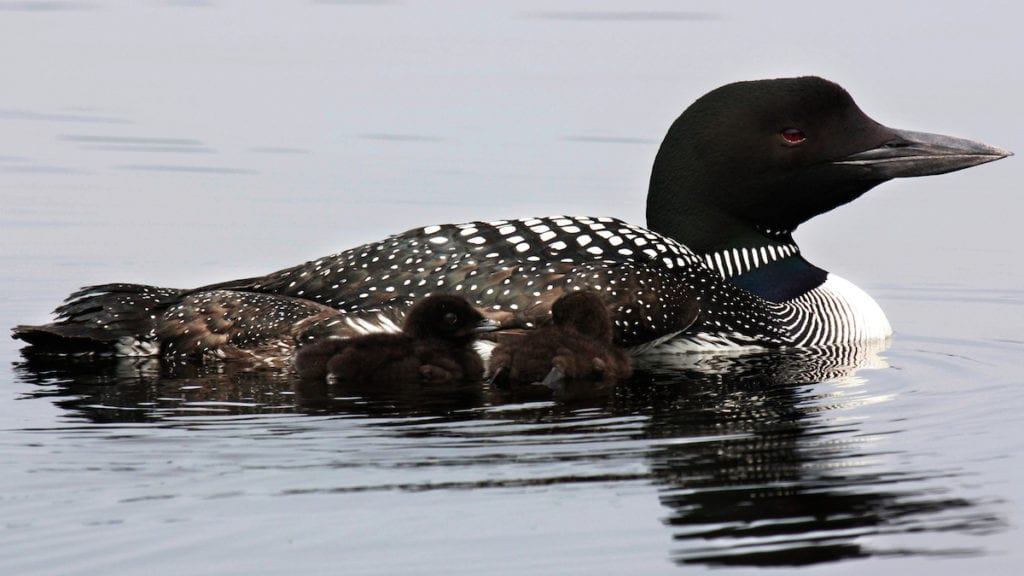
Nothing says summer in Maine more than the evocative tremolo call of a loon. And now that summer is officially here, it’s time to take stock of our loon population once more, in one of Maine Audubon’s signature events: the annual Loon Count.
This year, the 37th annual count will take place on Saturday, July 18, from 7 to 7:30 am. The information collected by volunteers will help both biologists and state officials understand more about the loon population and the health of Maine’s lakes. Last year, more than 1,400 people fanned out to look for loons on more than 300 lakes across the state.
Maine Audubon Conservation Biologist Tracy Hart leads the annual count. For the 2020 event, she says some lakes still need eyes and ears, especially in the Sebago Lakes region and areas around Rangeley. “This is a special year for the loon count,” says Hart. “The count always takes place on the third Saturday of July, and this year it falls on the 200th day of the 200th year Maine has been a state. We’re excited how many loon counters are able to join the count this year and we’d love to see some new sign -ups! Because of the pandemic, not everyone who usually participates is able to make it to Maine this year. There are so many lakes in Maine that there are always some in need of new loon counters.” Check this list of lakes still in need of counters.
Dedicated volunteers–some of whom have been involved with the count since its inception–serve to coordinate regions and recruit new counters, shepherding in new generations of loon stewards. This year, counters, who can count loons by boat or from shore, will be able to submit data using an online portal. For many families, the loon count has become an annual tradition that people look forward to each summer. For safety reasons, we are people to participate in family groups only, and to maintain social distancing while looking for loons.
Important conservation work has helped Maine’s adult loon population increase by 70 percent since the Loon Count began nearly four decades ago. There are still threats to loons, however, especially during the summer nesting season. Loons’ inability to walk very far means they need to nest close to the shoreline, making their nests susceptible to washout from boat wake or high water. A no-wake law requiring speeds that don’t generate wakes within 200 feet of shore has helped prevent shoreline erosion and also helped nesting loons.
One of the biggest threats to loons is lead poisoning from lead fishing tackle. Loons accidentally ingest lost or discarded lead tackle from the lake bottom. The sale of lead sinkers and bare-headed jigs 1 ounce or less or 2 1/2 inches long or less is now banned in Maine. Yet even with this law, trauma most likely from boat strikes has surpassed lead tackle as the leading cause of mortality in adult loons in recent years.
Another threat to loons is fireworks. Fireworks set off near nests can cause adults to abandon their nests, leaving eggs and chicks vulnerable to predators. Maine Audubon is urging people using fireworks to be sure they are far away from loons and other nesting birds.
To learn more about Maine’s loons and find out how you can get involved with the Maine Audubon Loon Count, visit maineaudubon1.wpengine.com/loons.
For more on loon behavior and laws surrounding loons and lakes, see our Living in Loon Territory brochure.
